Little by little, the rubble-work of the lid and of the gravel barricade was invented: an enormous improvement, of which the race did not fail to take advantage. The defensive fortification was the finishing-touch to the original structure. Here we have the origin and development of the instinct of the Resin-bees who make their home in Snail-shells.'
This glorious genesis of insect ways and means lacks just one little thing: probability. Life everywhere, even among the humble, has two phases: its share of good and its share of evil. Avoiding the latter and seeking the former is the rough balance-sheet of life's actions.
Animals, like ourselves, have their portion of the sweet and the bitter: they are just as anxious to reduce the second as to increase the first; for, with them as with us, De malheurs evites le bonheur se compose.
(Bad luck missed is good luck gained.)
If the Bee has so faithfully handed down her casual invention of a resin nest built inside a Snail-shell, then there is no denying that she must have just as faithfully handed down the means of averting the terrible danger of belated hatchings. A few mothers, escaping at rare intervals from the catacombs blocked by the Osmiae, must have retained a lively memory, a powerful impression of their desperate struggle through the mass of earth; they must have inspired their descendants with a dread of those vast dwellings where the stranger comes afterwards and builds; they must have taught them by habit the means of safety, the use of the medium-sized shell, which the nest fills to the mouth. So far as the prosperity of the race was concerned, the discontinuance of the system of empty vestibules was far more important than the invention of the barricade, which is not altogether indispensable: it would have saved them from perishing miserably, behind impenetrable walls, and would have considerably increased the numbers of their posterity.
Thousands and thousands of experiments have been made throughout the ages with Snail-shells of average dimensions: the thing is certain, because I find many of them to-day. Well, have these life-saving experiments, with their immense importance to the race, become general by hereditary bequest? Not at all: the Resin-bee persists in using big Snail-shells just as though her ancestors had never known the danger of the Osmia-blocked vestibule. Once these facts are duly recognized, the conclusion is irresistible: it is obvious that, as the insect does not hand down the casual modification tending towards the avoidance of what is to its disadvantage, neither does it hand down the modification leading to the adoption of what is to its advantage. However lively the impression made upon the mother, the accidental leaves no trace in the offspring. Chance plays no part in the genesis of the instincts.
Next to these tenants of the Snail-shells we have two other Resin-bees who never come to the shells for a cabin for their nests. They are Anthidium quadrilobum, LEP., and A. Latreillii, LEP., both exceedingly uncommon in my district. If we meet them very rarely, however, this may well be due to the difficulty of seeing them; for they lead extremely solitary and wary lives. A warm nook under some stone or other; the deserted streets of an Ant-hill in a sun-baked bank; a Beetle's vacant burrow a few inches below the ground; in short, a cavity of some sort, perhaps arranged by the Bee's own care:
these are the only establishments which I know them to occupy. And here, with no other shelter than the cover of the refuge, they build a mass of cells joined together and grouped into a sphere, which, in the case of the Four-lobed Resin-bee, attains the size of a man's fist and, in that of Latreille's Resin-bee, the size of a small apple.
At first sight, we remain very uncertain as to the nature of the strange ball. It is brown, rather hard, slightly sticky, with a bituminous smell. Outside are encrusted a few bits of gravel, particles of earth, heads of large-sized Ants. This cannibal trophy is not a sign of barbarous customs: the Bee does not decapitate Ants to adorn her hut. An inlayer, like her colleagues of the Snail-shell, she gathers any hard granule near at hand capable of strengthening her work; and the dried skulls of Ants, which are frequent around about her abode, are in her eyes building-stones of equal value to the pebbles. One and all employ whatever they can find without much seeking. The inhabitant of the shell, in order to construct her barricade, makes shift with the dry excrement of the nearest Snail;the denizen of the flat stones and of the roadside banks frequented by the Ants does what she can with the heads of the defunct and, should these be lacking, is ready to replace them with something else. Moreover, the defensive inlaying is slight; we see that the insect attaches no great importance to it and has every confidence in the stout wall of the home.
The material of which the work is made at first suggests some rustic wax, much coarser than that of the Bumble-bees, or rather some tar of unknown origin. We think again and then recognize in the puzzling substance the semitransparent fracture, the quality of becoming soft when exposed to heat and of burning with a smoky flame, the solubility in spirits of wine--in short, all the distinguishing characteristics of resin. Here then are two more collectors of the exudations of the Coniferae. At the points where I find their nests are Aleppo pines, cypresses, brown-berried junipers and common junipers. Which of the four supplies the mastic? There is nothing to tell us. Nor is there anything to explain how the native amber-colour of the resin is replaced in the work of both Bees by a dark-brown hue resembling that of pitch. Does the insect collect resin impaired by the weather, soiled by the sanies of rotten wood? When kneading it, does it mix some dark ingredient with it? I look upon this as possible, but not as proved, since I have never seen the Bee collecting her resin.














